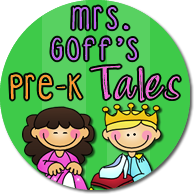UPDATED 2016
I made another gingerbread house this year. Once again, I worked by myself and it took about 2 hours. I took photos of the process this time. My 2016 comments are italicized.
The kids are LOVING the life-size gingerbread that I build for our classroom.
For the past couple of years I have made some sort of box structure for our classroom. Here are pictures of my previous castles and big red barn:
In each case I used Mr. McGroovy's plans and most importantly his special box rivets. The box rivets cost less than $20 for a box. The rivets are reusable but I couldn't find my rivets from last year so I ordered more from Amazon Prime and got them in one day. Because there are only 2 seams, the house could probably be connected with tape but I know the rivets will stand up to 20 rambunctious pre-k students so I think they are well worth the cost.
 |
| Mr. McGroovy's box rivets |
I got 2 large refrigerator boxes and 2 dishwasher boxes from a local appliance store that does its own deliveries. If you can find an appliance store like this it is easy to collect the boxes. I suggest you call around. The trick is to bring a utility knife with you and cut off the top and bottom of the box. It is then easy to fold the box and fit it in your car.
 | ||
| This is an illustration from McGroovy's website showing how to fold boxes to fit in car. |
In 2016, I was only able to find one intact refrigerator box. I got a second but it had been cut in three pieces. It wasn't a problem to put the pieces together with the rivets.
 |
| This is one of the rivets connecting the side to the back. |
I cut out windows and a door.
I then stood the boxes up and connected the front shorter sides to the back shorter sides with a couple of rivets. This is what the house looked like after I put the 2 big boxes together:
 |
| corner brackets |
 |
| I cut the corner of a smaller box to reinforce the corners. |
 |
| This is a photo of me adding the corner reinforcement. You can see that I use the awl to make a hole and then put the rivet in. |
The roof was made with the 2 smaller boxes that I cut to the same size and riveted together. It would have been easier to use another big box but I didn't want to go back to the appliance store.(I had to use 2 boxes for the roof again in 2016 :(
The roof is attached by cutting flaps in the roof near the front and back walls. Attach the flaps to the walls using rivets to secure the roof.
 In 2016 I hot glued paper plate icing along the top of the roof before I tried it out on the house. As I said, I don't measure too much so I just cut the roof down after I added it to the house. |
 |
| Paper plate icing on the roof. The hole in the roof is the little flap I cut and attached to the front of the house with a rivet. |
  |
| lots of glittery candy - that little orange gummy worm might be my very favorite decoration :) The black dot is the rivet holding the corner bracket in place. |
 |
| adding glitter |






















































